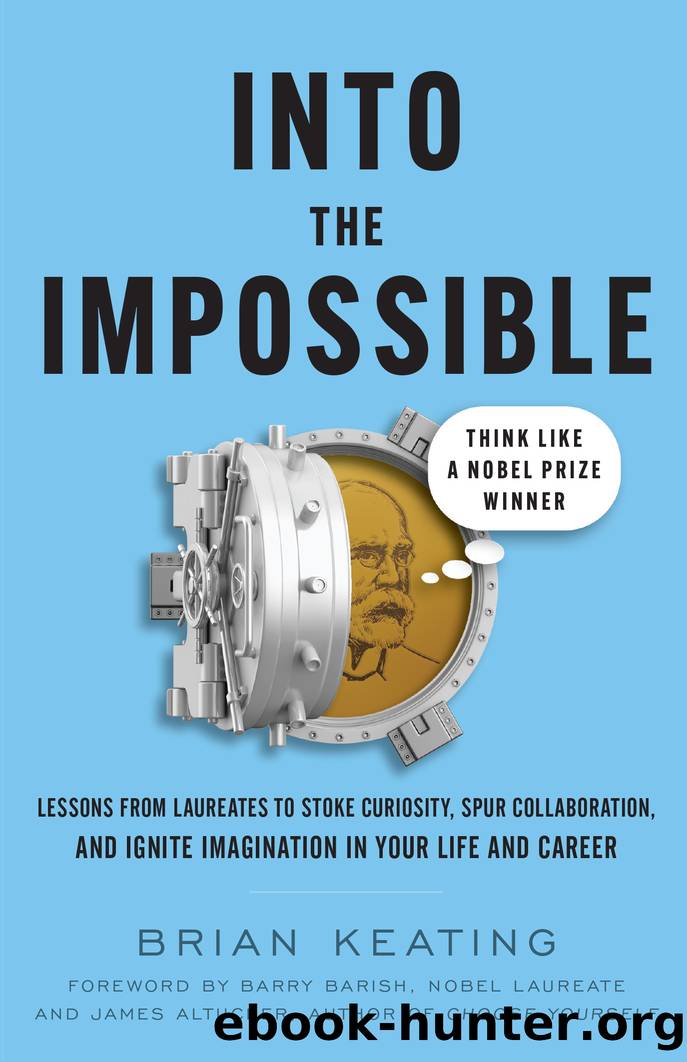Into the Impossible: Think Like a Nobel Prize Winner: Lessons from Laureates to Stoke Curiosity, Spur Collaboration, and Ignite I by Brian Keating

Author:Brian Keating
Language: eng
Format: epub
Publisher: BookBaby
Published: 2021-08-12T15:29:56+00:00
Inside a Nobel Mind
Finding the Human in the Genius
Can creativity be taught?
Wieman: Iâm not going to talk about creativity in the arts, but I have thought a lot about creativity in science and have talked with people who study this. To be creative in science is basically where people look at some situation or question and simply find a way thatâs different than how everybody else has been looking at it. Itâs not bringing in something new. Itâs realizing things people already knew but did not really understand how to apply.
I would argue the standard educational approach we use in science is not ineffective in teaching creativity; rather, it is anti-effective in teaching creativity. In a normal course, students will learn things and be given tests they are graded on. The fundamental measure is always, âAre you able to produce the one answer the instructor wants to see?â That is completely the opposite of being able to think of ways to look at things or solve problems that nobody else has done before. You are penalized for creativity up through your entire formal schooling. You have to go through this big hurdle that says, âGet the answer all the faculty wants to seeââand that qualifies you to finally go out and do things where there isnât an answer. Stupid system, right?
To be creative in science seems irrelevant to the creative process in the arts. But actually, theyâre very similar, and the similarities extend to any other non-artistic field. You can achieve creative greatness in whatever your field is in the exact same way you would in the arts. Begin by reproducing the âmasters.â In so doing, youâre effectively developing the muscle memory that an artist would get from reproducing the Mona Lisa or Monetâs Water Lilies. The muscle developed is not only physical dexterity but the mind as well. Some of your ten-thousand hours can be dedicated to that. You have a problem when all of your ten-thousand hours are dedicated to rote tasks such as memorization. Actually trying to reproduce the work of the giants who came before you instead of just memorizing it is a step toward mastery.
Download
This site does not store any files on its server. We only index and link to content provided by other sites. Please contact the content providers to delete copyright contents if any and email us, we'll remove relevant links or contents immediately.
Big Magic: Creative Living Beyond Fear by Elizabeth Gilbert(5303)
Paper Towns by Green John(4753)
On Writing A Memoir of the Craft by Stephen King(4636)
The Doodle Revolution by Sunni Brown(4476)
Hyperfocus by Chris Bailey(3874)
Evolve Your Brain by Joe Dispenza(3466)
Unlabel: Selling You Without Selling Out by Marc Ecko(3450)
The Red Files by Lee Winter(3251)
Draw Your Day by Samantha Dion Baker(3086)
The Power of Mindful Learning by Ellen J. Langer(3057)
The Art of Dramatic Writing: Its Basis in the Creative Interpretation of Human Motives by Egri Lajos(2826)
Applied Empathy by Michael Ventura(2723)
The War Of Art by Steven Pressfield(2719)
The 46 Rules of Genius: An Innovator's Guide to Creativity (Voices That Matter) by Marty Neumeier(2655)
How to be More Interesting by Edward De Bono(2643)
Keep Going by Austin Kleon(2567)
Why I Am Not a Feminist by Jessa Crispin(2556)
How to Stop Worrying and Start Living by Dale Carnegie(2545)
You Are Not So Smart by David McRaney(2494)
